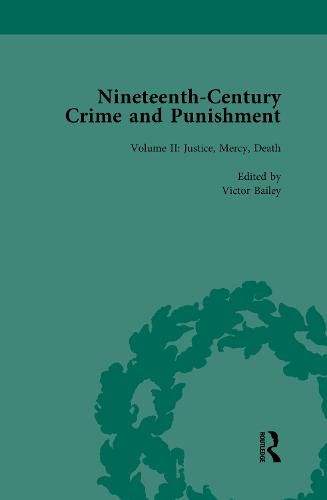Readings Newsletter
Become a Readings Member to make your shopping experience even easier.
Sign in or sign up for free!
You’re not far away from qualifying for FREE standard shipping within Australia
You’ve qualified for FREE standard shipping within Australia
The cart is loading…






This four volume collection looks at the essential issues concerning crime and punishment in the long nineteenth-century. Through the presentation of primary source documents, it explores the development of a modern pattern of crime and a modern system of penal policy and practice, illustrating the shift from eighteenth century patterns of crime (including the clash between rural custom and law) and punishment (unsystematic, selective, public, and body-centred) to nineteenth century patterns of crime (urban, increasing, and a metaphor for social instability and moral decay, before a remarkable late-century crime decline) and punishment (reform-minded, soul-centred, penetrative, uniform and private in application).
The first two volumes focus on crime itself and illustrate the role of the criminal courts, the rise and fall of crime, the causes of crime as understood by contemporary investigators, the police ways of ‘knowing the criminal,’ the role of ‘moral panics,’ and the definition of the ‘criminal classes’ and ‘habitual offenders’. The final two volumes explore means of punishment and look at the shift from public and bodily punishments to transportation, the rise of the penitentiary, the convict prison system, and the late-century decline in the prison population and loss of faith in the prison.
$9.00 standard shipping within Australia
FREE standard shipping within Australia for orders over $100.00
Express & International shipping calculated at checkout
This four volume collection looks at the essential issues concerning crime and punishment in the long nineteenth-century. Through the presentation of primary source documents, it explores the development of a modern pattern of crime and a modern system of penal policy and practice, illustrating the shift from eighteenth century patterns of crime (including the clash between rural custom and law) and punishment (unsystematic, selective, public, and body-centred) to nineteenth century patterns of crime (urban, increasing, and a metaphor for social instability and moral decay, before a remarkable late-century crime decline) and punishment (reform-minded, soul-centred, penetrative, uniform and private in application).
The first two volumes focus on crime itself and illustrate the role of the criminal courts, the rise and fall of crime, the causes of crime as understood by contemporary investigators, the police ways of ‘knowing the criminal,’ the role of ‘moral panics,’ and the definition of the ‘criminal classes’ and ‘habitual offenders’. The final two volumes explore means of punishment and look at the shift from public and bodily punishments to transportation, the rise of the penitentiary, the convict prison system, and the late-century decline in the prison population and loss of faith in the prison.